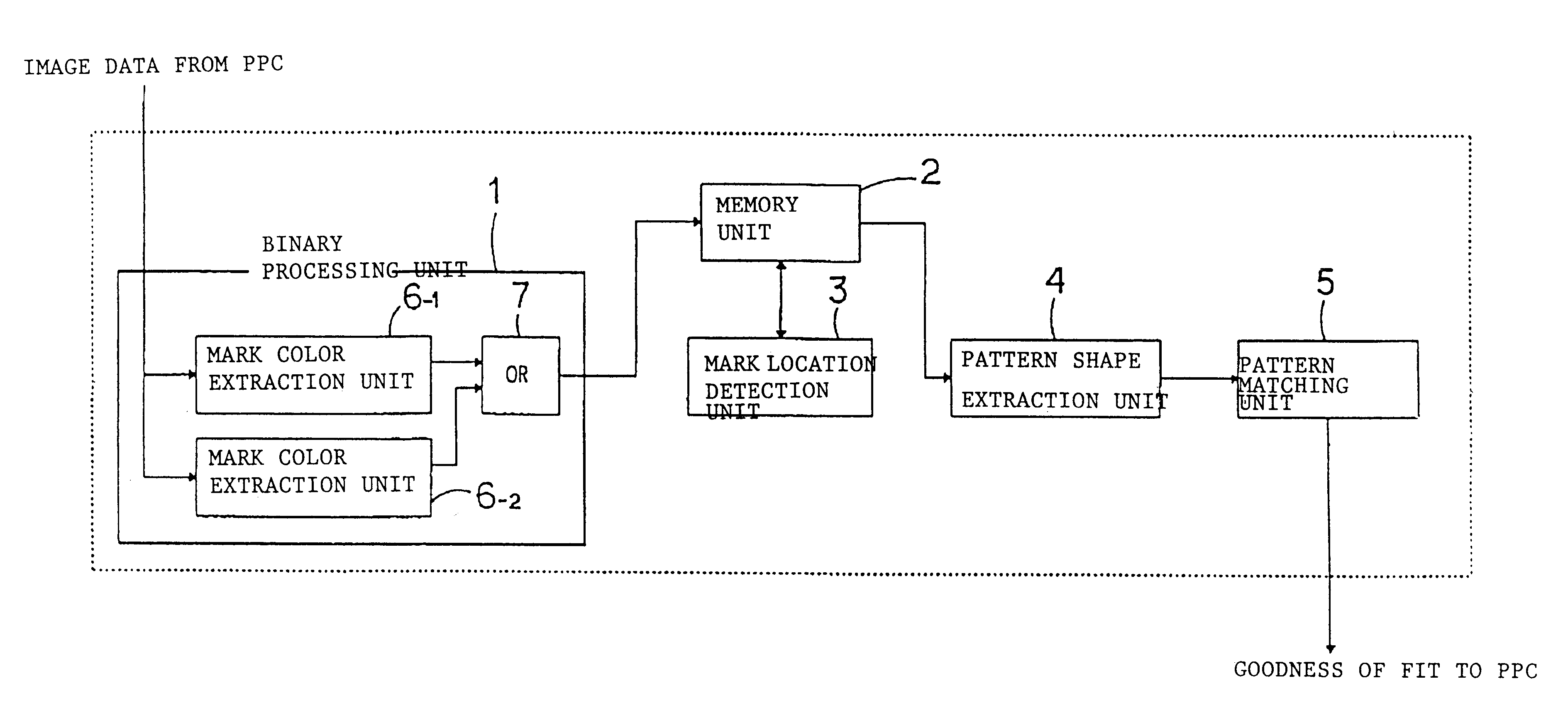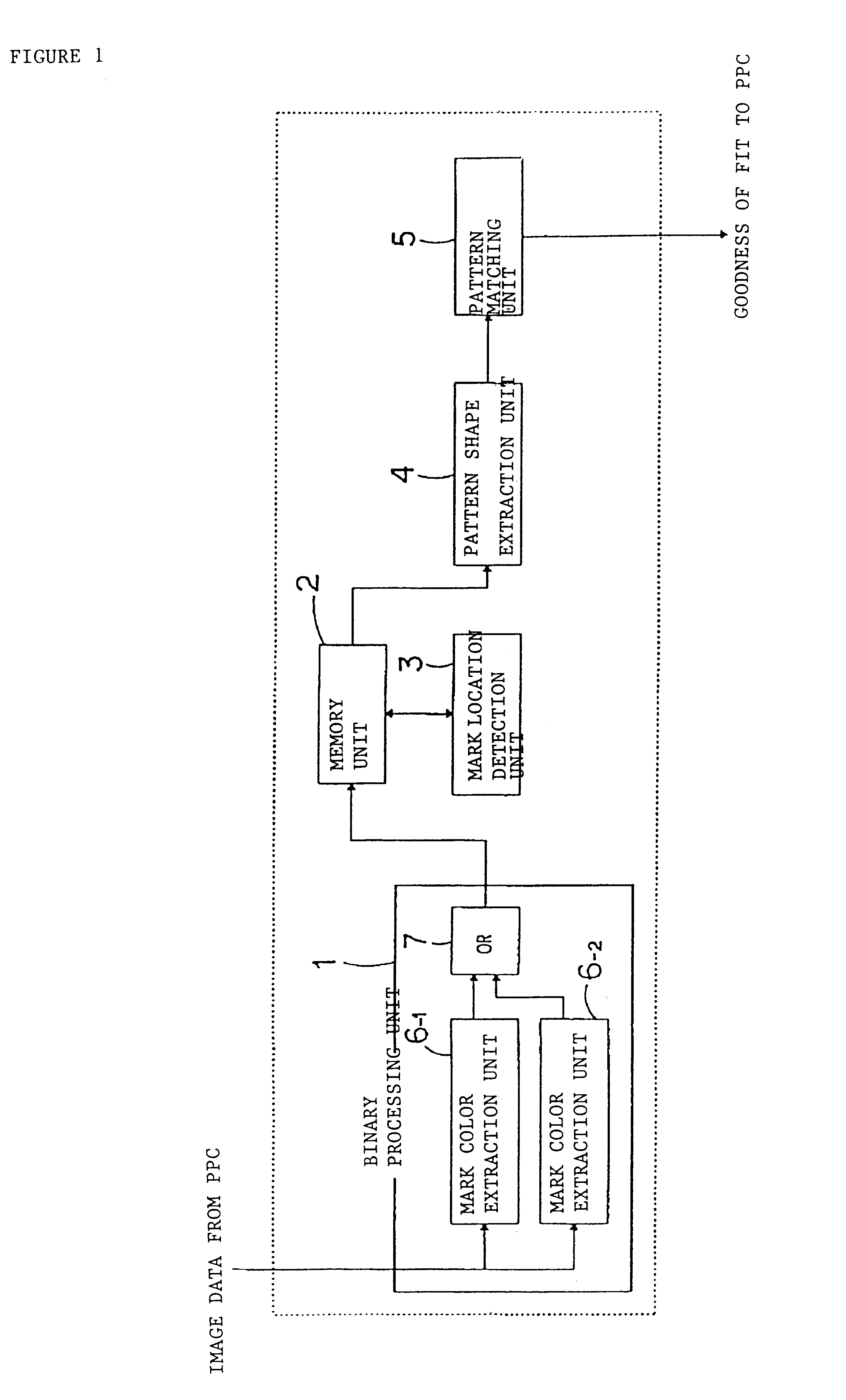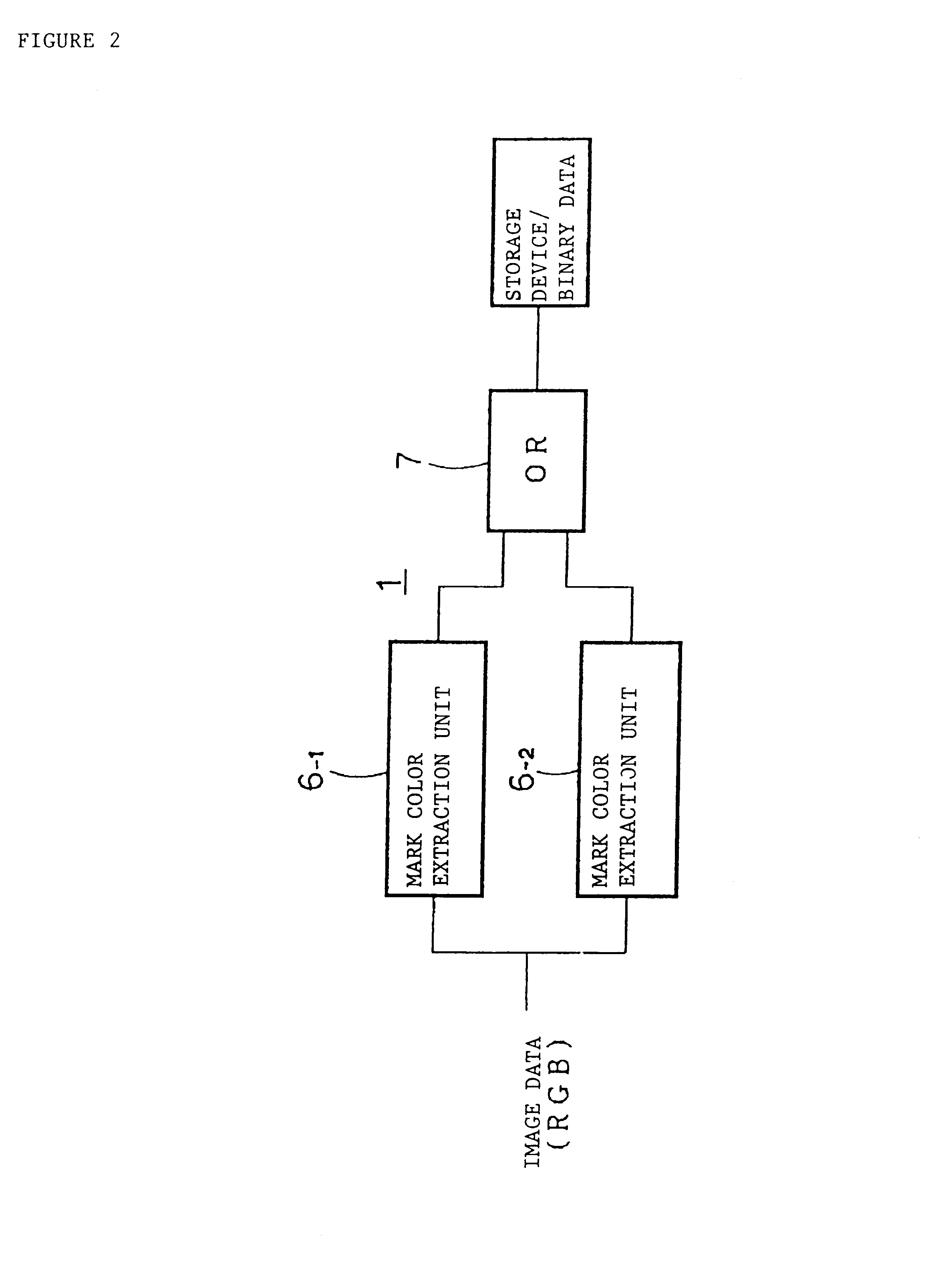Image processing device for detecting one-color marks of a number of colors and image processing method thereof
a technology of image processing and one-color marks, applied in the field of image processing devices and image processing methods, can solve problems such as counterfeiting of non-reproducible documents
- Summary
- Abstract
- Description
- Claims
- Application Information
AI Technical Summary
Benefits of technology
Problems solved by technology
Method used
Image
Examples
Embodiment Construction
[0058]In the following, we shall give a more complete explanation of the invention with reference to an ideal embodiment.
[0059]FIG. 1 is a block diagram of an image processing device which is an ideal embodiment of this invention. This image processing device can determine whether a certain specified image (a set of marks) can be found in an image. It consists of binary processing unit 1, which receives image data from a PPC and binarizes them; memory unit 2; mark location detection unit 3; pattern shape extraction unit 4; and pattern matching unit 5.
[0060]Binary processing unit 1, which is shown in FIG. 2, has two color extraction blocks, 6-1 and 6-2, and an OR circuit 7, which finds the logical sum of the outputs of blocks 6-1 and 6-2. Color extraction blocks 6-1 and 6-2, which are pictured in FIG. 3, have three comparators, one each for CMR, CMG and CMB, and an AND circuit which accepts their output. Upper and lower threshold values are set for all R (red), G (green) and B (blue)...
PUM
 Login to View More
Login to View More Abstract
Description
Claims
Application Information
 Login to View More
Login to View More - R&D
- Intellectual Property
- Life Sciences
- Materials
- Tech Scout
- Unparalleled Data Quality
- Higher Quality Content
- 60% Fewer Hallucinations
Browse by: Latest US Patents, China's latest patents, Technical Efficacy Thesaurus, Application Domain, Technology Topic, Popular Technical Reports.
© 2025 PatSnap. All rights reserved.Legal|Privacy policy|Modern Slavery Act Transparency Statement|Sitemap|About US| Contact US: help@patsnap.com



